As NASA’s Kepler Mission continues to supply important data and continuously monitors stars for transit signals, astronomers from Cornell University focused on 80 M dwarf stars for Earthlike planets. In doing so, the researchers found three planets orbiting within their host stars’ “habitable zones,” an important spot for determining whether life as we know it could be possible.
It’s not little green men, but it could be a step in that direction: Cornell astronomers, using data from the NASA Kepler Mission, have identified three Earthlike planets orbiting their own suns, all of which could be hospitable to life.
The team of astronomers used the Cornell-built Near-Infrared Triple Spectrograph (TripleSpec) at California’s Mount Palomar Observatory to measure the temperatures and metallicities of small stars called M dwarfs, first recorded by the NASA Kepler mission, which then led to observations of planets orbiting these stars. Kepler launched in 2009 to search for planets outside our solar system, which are called extrasolar planets or exoplanets. The team that built TripleSpec, completed in 2008, was led by Terry Herter, Cornell professor of astronomy.
The findings were published online April 23 in Astrophysical Journal Letters (Vol. 750, No. 2). The discovery could lead to better studies of these planets and pave the way toward discovering planets just like Earth.
The three planets orbit within their host stars’ “habitable zones” — the orbital distance in which liquid water could exist, and the sweet spot for determining whether life could be possible. The host stars — KOI (Kepler Object of Interest) 463.01, KOI 812.03, and KOI 854.01 — are located in areas of the sky between the constellations Cygnus and Lyra, in the range of a few hundred to a few thousand light years away.
“There is a fairly solid argument that the vast majority of planets in the universe, and quite possibly the Earthlike habitable zone planets, are planets orbiting M dwarfs,” said Jamie Lloyd, associate professor of astronomy and mechanical and aerospace engineering, and paper co-author.
The Kepler mission continuously monitors 150,000 stars for transit signals — a dip in the star’s brightness due to the passing of a planet. The Cornell team narrowed the list to 80 stars with these signals, focusing on stars called M dwarfs. These are smaller, dimmer stars than our sun, but the majority of the stars in the universe are M dwarfs, the researchers said.
“These stars are super faint in the visible wavelengths, neglected for years” because they are notoriously hard to characterize, said paper co-author Bárbara Rojas-Ayala, Ph.D. ’12, now a researcher at the American Museum of Natural History.
While at Cornell, Rojas-Ayala developed a technique using TripleSpec to measure metallicities and temperatures of M dwarf stars. The Cornell team used this technique to identify the same parameters for the 80 M-dwarf stars. Using data from TripleSpec combined with theoretical models of how these types of stars probably evolved over time, they obtained the sizes of these 80 stars.
TripleSpec gave the researchers more accurate measurements of the stars’ characteristics than originally obtained by the Kepler mission. And around these stars, they identified three Earthlike planet candidates based on their relative size, mass and temperature compared with Earth, the likelihood of having a rocky surface and their presence in their stars’ habitable zone.
“Seventy percent of the stars in the universe are these small stars, not like our sun,” said Philip Muirhead, Ph.D. ’11, now a researcher at California Institute of Technology. “So if these planets are common around small stars, and small stars are common in the universe, then most life in the universe may in fact exist around these types of planets, and not around Earthlike systems and sunlike stars.”
Astronomers call planets “candidates” until follow-up studies confirm them as planets; the Cornell researchers hope their work will inspire other scientists to point their telescopes in the direction of these new planet candidates. For example, said Muirhead, astronomers might study these planets’ atmospheres using space telescopes like Hubble or the James Webb Space Telescope, and look for biosignatures, like oxygen absorption lines.
“If we saw signatures of oxygen in these planets’ atmospheres, that would be a major step toward identifying extraterrestrial life in the universe,” Muirhead said.
Reference: “Characterizing the Cool Kepler Objects of Interests. New Effective Temperatures, Metallicities, Masses, and Radii of Low-Mass Kepler Planet-Candidate Host Stars” by Philip S. Muirhead, Katherine Hamren, Everett Schlawin, Bárbara Rojas-Ayala, Kevin R. Covey and James P. Lloyd, 23 April 2012, Astrophysical Journal Letters.
DOI: 10.1088/2041-8205/750/2/L37
The research time at Palomar was supported by Cornell.

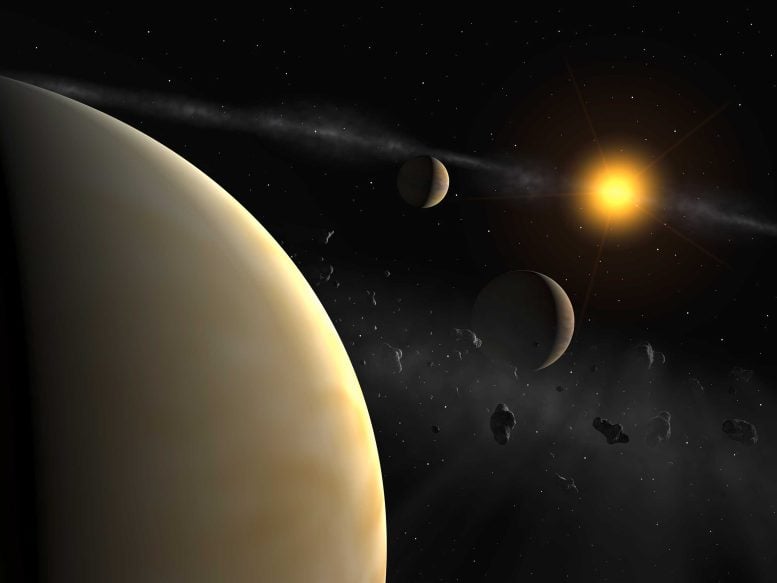
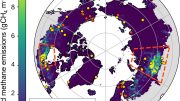

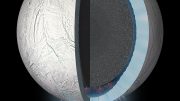


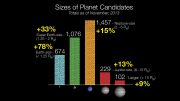
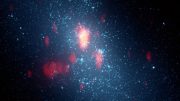

Dr. Frank Salisbury of Utah State University calculated the odds of spontaneous formation of basic DNA molecule essential for appearance of life. He assumed that this DNA molecule had to develop by chemical reaction on 1020 (that’s 1,000 trillion X billion, or 10 followed by 20 zeros) “hospitable” planets over a period of 4 billion years. What are the chances that a single DNA molecule formed? By his estimate 10415! (One chance in 10 followed by 415 zeros).
Evolutionist acknowledge that even a simple protein molecule forming at random in an organic soup is 10113 . One chance in 10 followed by 113 zeros.
Some protein serve as structural materials and other enzymes. 2000 proteins serving as enzymes are needed for cell activity. What are the chances of obtaining all of these at random? One chance in 1040,000!
Scientist attest that something with a chance of 1050 never happens.